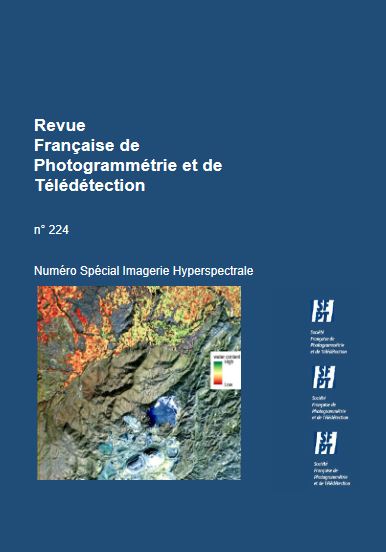Hyperspectrale Imagery And Urban Areas: Results Of The HYEP Project
DOI:
https://doi.org/10.52638/rfpt.2022.589Keywords:
Hyperspectral imagery, Toulouse, impervious surface, vegetation, solar panels, fusion, classificationAbstract
The HYEP project (ANR HYEP 14-CE22-0016-01 Hyperspectral imagery for Environmental urban Planning - Mobility and Urban Systems Programme - 2014) confirmed the interest of a global approach to the urban environment by remote sensing and in particular by using hyperspectral imaging (HI). The interest of hyperspectral images lies in the range of information provided over wavelengths from 0.4 to 4 μm; they thus provide access to spectral quantities of interest and to chemical or biophysical parameters of the surface. HYEP's objective was to specify this and to propose a panel of methods and treatments taking into account the characteristics of other existing sensors in order to compare their performance. The developments carried out were applied and evaluated on hyperspectral airborne images acquired in Toulouse, also used to synthesize space systems: Sentinel-2, Hypxim/Biodiversity and Pleiades. Among the locks identified were those related to improving the spatial capabilities of the sensors and spatial scale changes, which were partially overcome by fusion and sharpening approaches, which proved to be successful. Extraction, fusion or classification methods were used at different spatial resolutions to qualify the gains and complementarity of HI relative to other sensors. These assessments were conducted on key ‘objects’ related to various environmental issues for urban planners: impervious surfaces, vegetation or even the detection of solar panels
Downloads
Downloads
Published
How to Cite
Issue
Section
Categories
License
Copyright (c) 2022 Christiane Weber

This work is licensed under a Creative Commons Attribution 4.0 International License.






